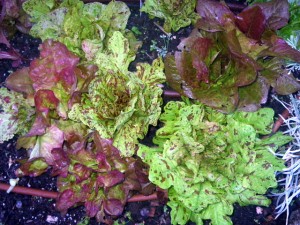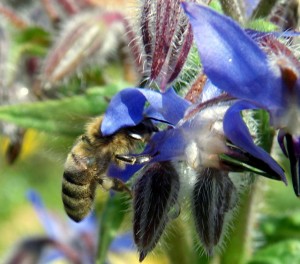by Avis Licht
I’m starting a new feature on my blog as a result of popular demand. Whatever your reason, it’s going to be easy to send me your gardening questions and get a quick answer. If I don’t know the answer, I’ll direct you to a good source.
ASK TODAY!
Here’s chance for all of you far flung fans to ask me questions about gardening. No question is too simple. Gardening is a wonderful, yet perplexing activity. Why something works once and then the next time it’s a total bust can be frustrating.
Nature will have her way, but there are methods that work to ensure success in the garden. After 40 years with my hands in the dirt, I’ve probably made as many mistakes as you could imagine, but trust me, I haven’t given up yet. And you can be the beneficiary of my experience.
Ask a question in the comment section below and I’ll get back to you pronto.
I look forward to hearing from you.
Yours in the joy of gardening,
Avis
I love answering your questions, and you can help me to keep doing it when you buy your tools, books and garden stuff through my site. Thanks! Great Gardening Tools

 Follow
Follow



Wondering what I should plant this late in the season in southern california. I want edible garden type plants
Hi Kate,
When you say edible garden type plants, do you mean your vegetable garden or more of landscape/edible type plants? For your vegetable garden you can still plant green beans, summer squash, winter squash, peppers, tomatoes, eggplant, and herbs, like basil, rosemary, thyme, lavender, chives, parsley.
When you go to a local nursery, they are usually carrying plants that are still appropriate for your area.
For edible landscape shrubs you can’t do better than dwarf lemon, lime, and other citrus. Pineapple guava is a wonderful ornamental shrub that produces a delicious fruit in the fall. Another great little shrub is the Chilean guava. To find out more about Pineapple guava read my post https://www.ediblelandscapingmadeeasy.com/2011/12/21/pineapple-guava-a-great-shrub-for-your-edible-landscape/#1.
I hope this helps.
Avis
Hi Kate,
If you’re asking about your vegetable garden, you can still plant warm weather crops like tomatoes, peppers, eggplant, cucumbers, zuchinni, and winter squash. Herbs are wonderful also. Basil, rosemary, thyme, marjoram, lavender will all grow well in your climate. Use the search bar in my blog and you can find lots of information on my site about all these plants.
If you’re looking for some ornamental shrubs that produce edibles, look no further than dwarf lemon, lime, mandarin orange and other citrus. Pineapple guava and strawberry guava are beautiful shrubs that produce delicious fruit.
Hope this helps.
Avis
Hi Avis,
I have 1 blueberry bush. Does it need to have a companion to produce blueberries? According to a friend you need more than 1 bush in your garden to produce the berries. Thank You!
Hi Kathy,
Another great question. Most blueberries will have fruit without another plant, but they will produce more and better fruit with a companion. High bush blueberries are more self pollinating than other blueberries. On the other hand, who wants only one blueberry bush? They say, whoever “they” are, that you should have 2 bushes person. That’s a lot of blueberries. On the other,other hand it’s a great looking bush for the landscape that produces some of the best fruit in both taste and nutrition. Can’t get better than that.
To find out more about blueberries, read my post https://www.ediblelandscapingmadeeasy.com/2011/12/14/how-to-pick-a-blueberry-variety-for-your-edible-landscape/
Avis.
What do you recommend for peach leaf curl? I’ve picked off all the diseased leaves but is there a safe spray I could use to prevent further infestation?
Hi Cia,
That’s a really good question. Everyone wants to know the answer to that one.
The fungus responsible for peach leaf curl causes emerging new leaves to thicken and pucker. Infected foliage may be tinged red, pink, yellow, or white and usually occurs midsummer. Severely infected trees are weakened and may stop producing. To control the disease get rid of diseased plant parts to keep fungus from reinfecting the tree the next year. So taking the leaves off is good practice. Don’t put them in your compost and don’t let them fall to the ground under the tree.
Also you can apply fixed copper or lime sulfur dormant sprays once after autumn leaf drop and again just as buds begin to swell but before they open. Go to your local nursery and ask them for dormant oil spray.
Hope that helps.
Avis
Hello,
———————————————————–
Do you know where to find a new type of row cover? It is a woven type that has fibers arranged together in a mesh-like fashion. Evidently, it is much stronger and will last from year to year. This appeals to me, as the standard cover doesn\’t hold up well. I live in the PNW, but would order online. My climate is pretty temperate, as we are surrounded by water on three sides here in WA state on the Quimper Peninsula. But we do have a lot of cool, gray weather during the summer months.
Hi Carol,
Thanks for the question. Peaceful Valley Farm Supply carries this row cover. You can find it here. http://www.groworganic.com/supr-strong-woven-poly-20-w-ft.html. Just remember, the thicker the weave the less light it lets through. It is good for extreme weather fluctuations like late or early frosts.
Avis
Hi! Loving this Q & A and your site!
When is the best time to plant a bunch of wildflower seeds. I am up Zone 1. Is it too late?
Is fall better anyway?
Thanks!
HI Di,
Great question. Wildflowers in nature drop their seed at the end of summer and stay in the ground all winter. They come up in late spring in your zone, while the soil is still moist but warmed up after the snow has melted. To mimic nature you can sow in spring, but will need to water your seeds in case there is no rain. We’ve been a little short on rain this year. To keep them blooming longer you might want to give them a little water now and then.
It also helps to choose wildflowers native to your area. What catalogs sell as wildflowers are usually from somewhere else and they have different cultural requirements. Check out Peaceful Valley Farm Supply at http://www.groworganic.com for wonderful collections of California wildflowers.
To mimic nature you would sow in the Fall, but…nature makes millions of seeds, most of which don’t germinate. In a cold climate with snow, it is easier to control germination by sowing in late spring and water the ground. It’s cheating a little, but works.
Good luck and happy growing.
Avis